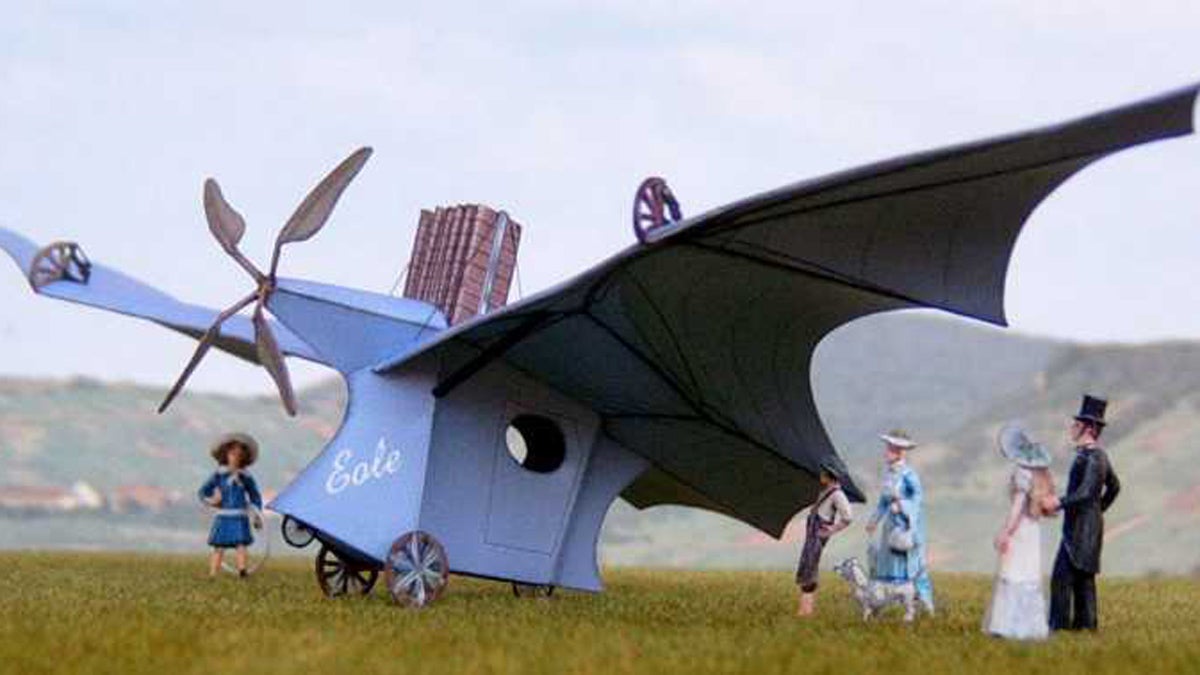First flight or historic hop?

Clément Ader's Éole attempted flight for the first time on October 9
In June of 1891, the French magazine L’illustration published an engraving of a mysterious machine observed in the outskirts of Paris. Eyewitnesses reported seeing a strange object resembling an enormous bird of blueish hue which actually flew for a few hundred meters. The man responsible for this remarkable contraption was an electrical engineer named Clément Ader, who first attempted to fly on October 9, 1890.
Ader had been fascinated with flight since childhood. Growing up outside Toulouse, he had studied insects and birds to learn how their wings worked. He set these investigations aside as an adult, working for a railway company before becoming interested in a new technology imported from America: the telephone. Ader installed the first telephone network in Paris and later created a system that allowed people to listen to operas or plays using their home phones.
Ader’s telephone patents provided him with financial stability and allowed him to return to the question of flight. He was part of a long French tradition of aeronautical innovation, dating back to the Montgolfier Brothers’ balloons in the 1780s. By the mid-19th century, a growing number of French inventors were eager to create a heavier-than-air flying machine. Some concentrated on building models, like Alphonse Penaud, who demonstrated the possibility of a stable flight using a rubberband-powered airplane in 1871.
Unlike Penaud, Ader had no interest in models. Instead, he decided to assemble a flying machine capable of carrying a human pilot. He again turned to nature for inspiration, using a bat’s wings as the model for his own vessel. An efficient steam engine of his own design would drive the propeller, whose blades were crafted to look like a bird’s feathers. He named the airplane Éole, in honor of Aeolus, the Greek god of the winds, and in the fall of 1890, he decided it was ready to fly.

Patent drawings of Clément Ader’s Éole. (World Imaging/Wikimedia Commons)
Ader shipped his airplane to a friend’s country estate and constructed a makeshift runway. On October 9, he climbed inside Éole and started the engine. It accelerated and succeeded in lifting off the ground for a few seconds but, as Ader recalled, “the end of the runway was very near and did not allow for more; I stopped the engine straight away and the Éole touched ground again, 50 meters further on.”
Contrary to Ader’s assertions and later press reports, there is no evidence that the Éole flew again after that initial trial. Indeed, most historians do not think Ader ever really flew at all. The Éole, they argue, was incapable of sustained or controlled flight. Compared to flights carried out by the Wright Brothers in 1903, Ader’s time in the air was more like a powered hop. Though he remained part of the French aviation community for the rest of his life, Clément Ader never designed a functional aircraft. Nevertheless, he deserves credit for the ingenuity required to create the Éole and the courage needed to make the first known test flight of a powered flying machine.
WHYY is your source for fact-based, in-depth journalism and information. As a nonprofit organization, we rely on financial support from readers like you. Please give today.



